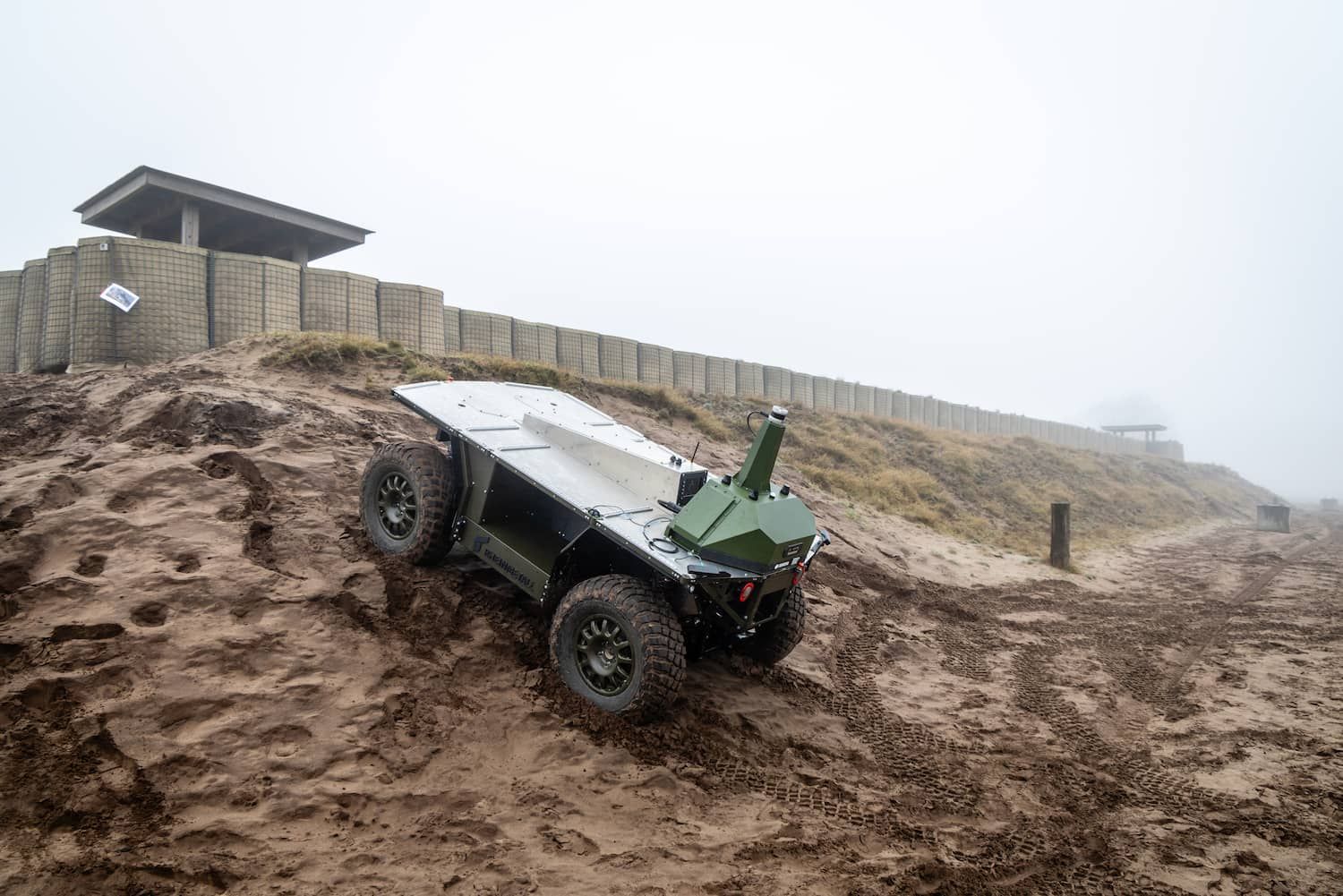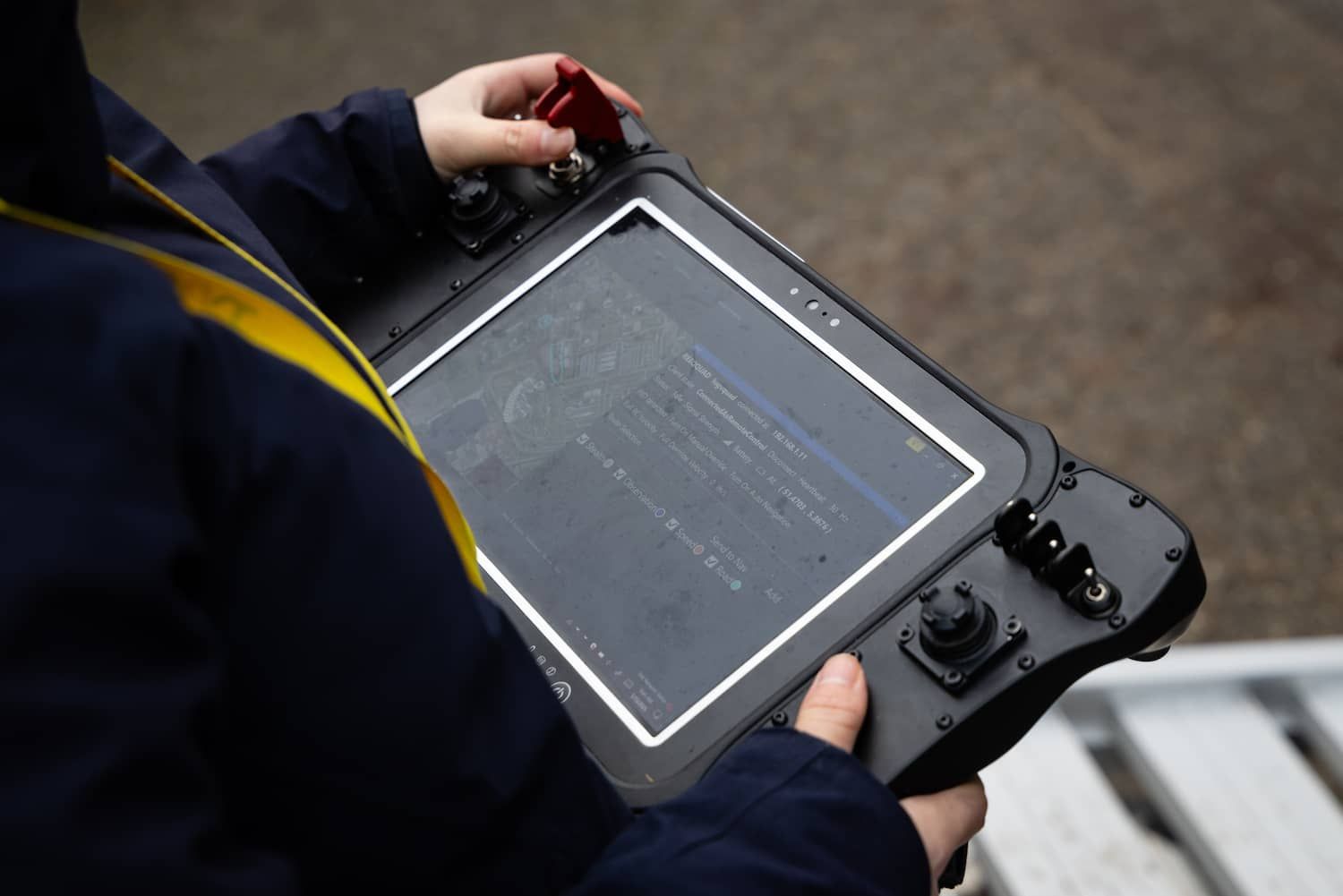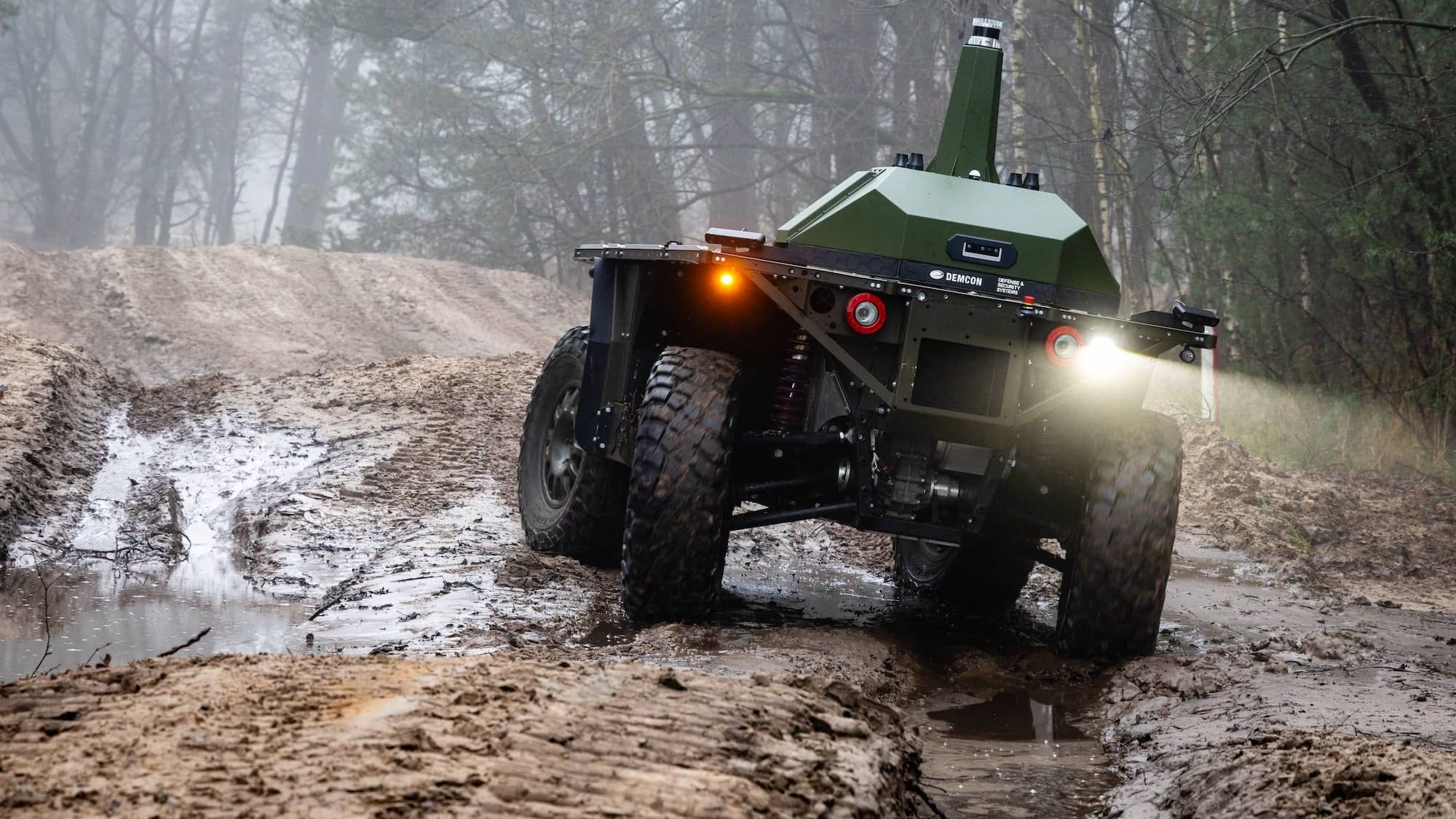In collaboration with Rheinmetall Defence Nederland, S[&]T, and TNO, we’ve made significant progress. Our team was responsible for the vehicle’s autonomous navigation capabilities and the human-machine interface (HMI). To achieve this, we developed an autonomy kit consisting of three core components:
Sensor tower hardware
Autonomous navigation software stack; with local GNSS waypoint-following, lidar-based mapping, dynamic obstacle avoidance and SLAM.
HMI; based on WINTAK allowing for remote control & real-time monitoring.
By fully integrating this kit into the vehicle, the iUGV was able to navigate both on-road and off-road environments autonomously. Operators simply set a destination, and the vehicle handles the rest while continuously scanning and mapping its surroundings. We also implemented several route planning optimization modes, including options for stealth, observation, and distance efficiency.
The field test validated the system’s reliability and autonomy under real-world conditions. Although further development is necessary, it demonstrated that the Dutch high-tech sector is fully capable of independently developing such advanced defense technologies. This recently led to an order from the Task Force Ukraine to supply 20 Ermine vehicles (in two different configurations) for autonomous transport of casualties. The vehicles are being built by Rheinmetall and Demcon is supplying the sensor tower, housing the necessary sensors, including the software that enables the vehicle to navigate autonomously and HMI.
We were joined during the test by Martin Bos, photographer and blogger at Defensiefotografie. He captured the images featured in this article and wrote an in-depth piece on the unmanned military vehicles. You can read his full article here: https://defensiefotografie.nl/nieuws/autonome-voertuig-is-werkelijkheid/



